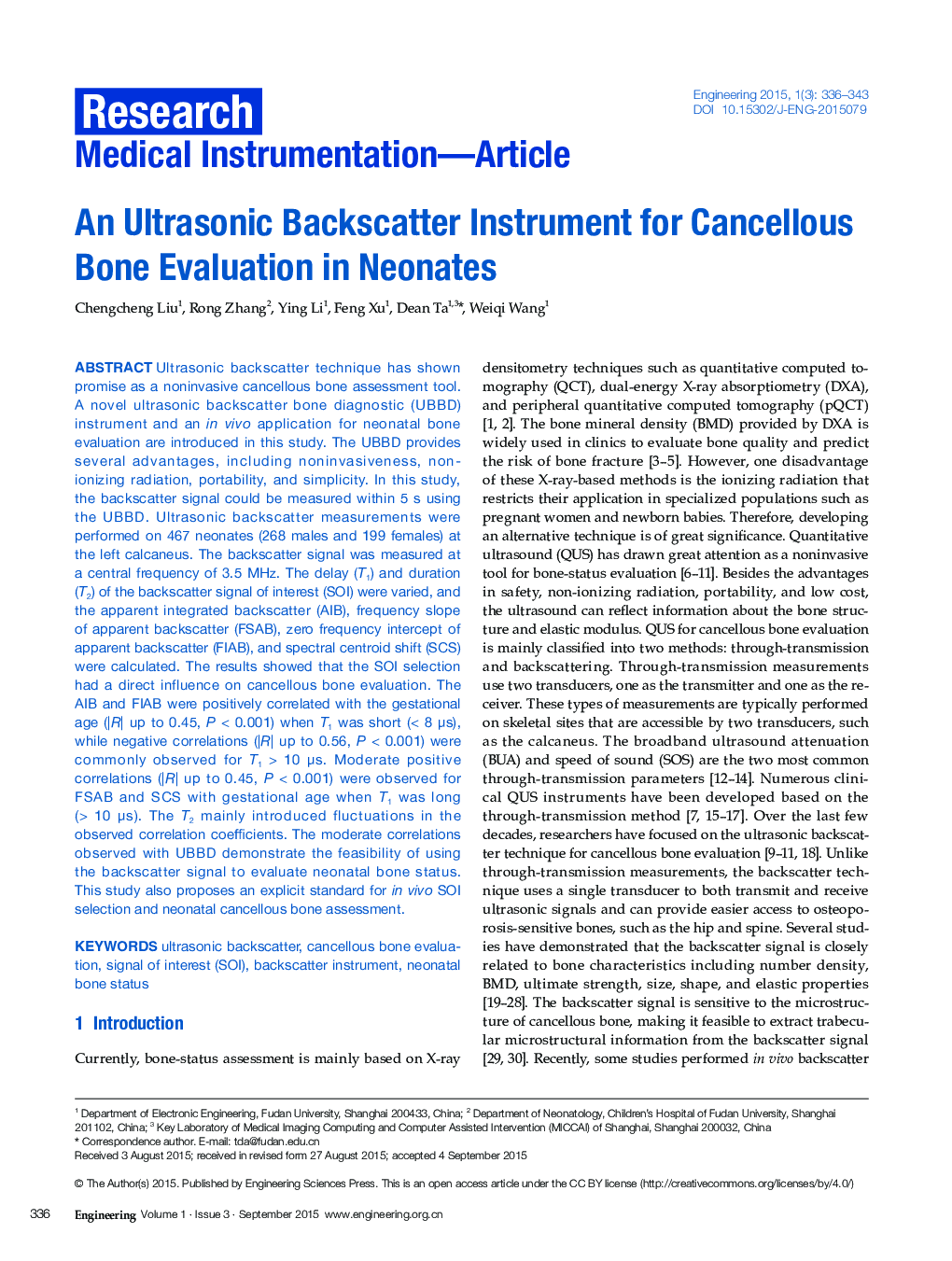| Article ID | Journal | Published Year | Pages | File Type |
|---|---|---|---|---|
| 480047 | Engineering | 2015 | 8 Pages |
ABSTRACTUltrasonic backscatter technique has shown promise as a noninvasive cancellous bone assessment tool. A novel ultrasonic backscatter bone diagnostic (UBBD) instrument and an in vivo application for neonatal bone evaluation are introduced in this study. The UBBD provides several advantages, including noninvasiveness, non-ionizing radiation, portability, and simplicity. In this study, the backscatter signal could be measured within 5 s using the UBBD. Ultrasonic backscatter measurements were performed on 467 neonates (268 males and 199 females) at the left calcaneus. The backscatter signal was measured at a central frequency of 3.5 MHz. The delay (T1) and duration (T2) of the backscatter signal of interest (SOI) were varied, and the apparent integrated backscatter (AIB), frequency slope of apparent backscatter (FSAB), zero frequency intercept of apparent backscatter (FIAB), and spectral centroid shift (SCS) were calculated. The results showed that the SOI selection had a direct influence on cancellous bone evaluation. The AIB and FIAB were positively correlated with the gestational age (|R| up to 0.45, P<0.001) when T1 was short (<8 µs), while negative correlations (|R| up to 0.56, P<0.001) were commonly observed for T1>10 µs. Moderate positive correlations (|R| up to 0.45, P<0.001) were observed for FSAB and SCS with gestational age when T1 was long (>10 µs). The T2 mainly introduced fluctuations in the observed correlation coefficients. The moderate correlations observed with UBBD demonstrate the feasibility of using the backscatter signal to evaluate neonatal bone status. This study also proposes an explicit standard for in vivo SOI selection and neonatal cancellous bone assessment.
